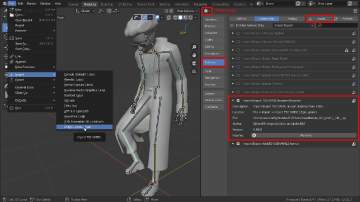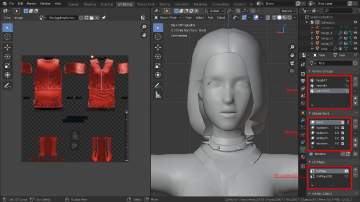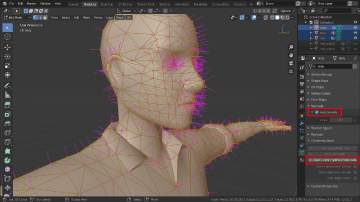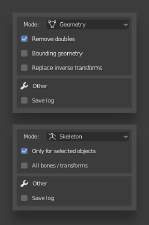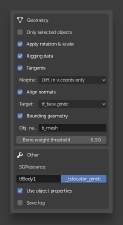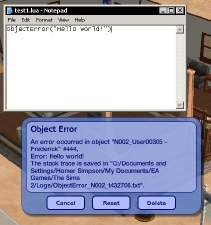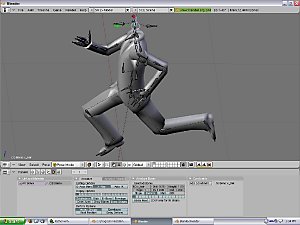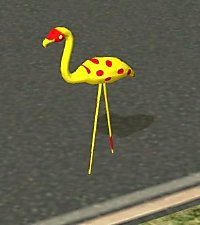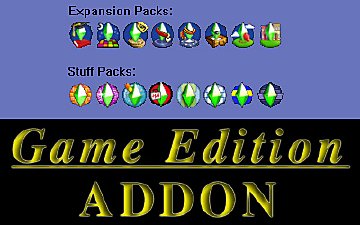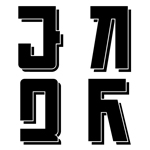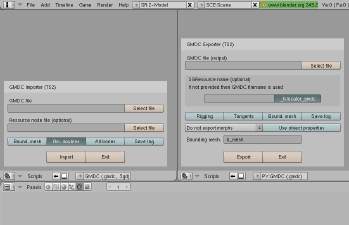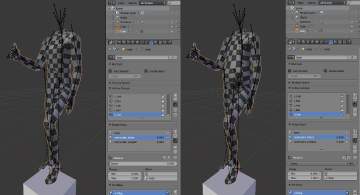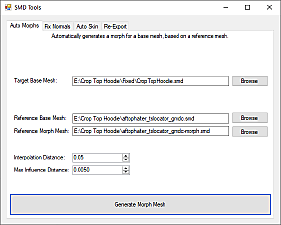 The Sims 2 GMDC Importer/Exporter for Blender 2.80+
The Sims 2 GMDC Importer/Exporter for Blender 2.80+

image1.png - width=1366 height=768
Screenshot #1

image2.png - width=1366 height=768
Screenshot #2 (installation)

image3.png - width=1366 height=768
Screenshot #3 (Bones, morphs, and UV layers)

image6.png - width=1366 height=768

image4.png - width=288 height=435
Import options

image5.png - width=288 height=526
Export options
(Official Blender website: https://www.blender.org/.)
It supports rigging data, two UV layers, morphs, custom normals (only for the basic shape), and bounding geometry.
Installation
1. Run Blender and change area to Preferences (see screenshot).
2. Choose "Add-ons" and press "Install...".
4. Install by selecting the io_ts2_gmdc.zip file.
3. Finally, enable "Import-Export: TS2 GMDC Importer/Exporter". (For easier navigation you may filter the list of add-ons by selecting "Import-Export" from the drop down list.
Now you can import GMDC files.
Importing
The importer works in two modes, Geometry and Skeleton.
To view the options, press the top right toggle button in the file selection window (if not already shown).
Geometry mode is used to import meshes from GMDC files, i.e., new mesh objects are added to the scene.
In Skeleton mode the importer loads data from CRES file, creates an armature object, and assigns armature modifiers to mesh objects.
In general, importing skeleton is not necessary for mesh editing, but may be helpful.
Some options here:
1. Remove doubles, which is useful for removing seams.
2. Importing bounding geometry (the one used for selection in the game).
3. Replacing inverse transforms previously stored in scene properties. (They are needed for animated meshes.)
4. Building an armature from all bones found in transform tree.
Bones are imported as vertex groups and initially named as "bone#{bone_idx}", that is, bone index is written after the number sign. Although bone names can be changed, do not delete or modify bone indices! Otherwise, the exporter will most likely throw errors, since bone indices are extracted from vertex group names.
Morphs are imported as shape keys.
By default, since version 0.91, the importer assigns custom normals.
Inverse transforms from GMDC files are saved in scene properties. This data is used by the exporter and included into generated GMDC file.
Exporting
Select "Rigging data" for animated meshes.
Depending on the material, your mesh may require tangent vectors.
Morphs can be exported in two modes (with and without normal vector differences).
If you want to export bounding geometry, you must specify the name of the mesh object.
New experimental feature: Aligning normals.
This is used to align normals of vertices on the edge of connection (e.g., neck, scalp). However, in order for this to work, you should place the GMDC files with target geometry (e.g., faces) into the target folder in add-on directory. (See add-on info to know the directory, screenshot #2). Then, the target list will display all files from the target folder. (Restart Blender to get the list updated.)
Be careful with morphs (i.e., shape keys). Maximum 4 morphs (and 4 bones) per vertex allowed!
Additionally, the gmdc_tools module is designed as a standalone. It is compatible with both Python 2 and Python 3. So, if you are familiar with Python, you can do things like:
>>> from gmdc_tools import load_resource
>>> res = load_resource('file.gmdc')
>>> geometry = res.nodes[0].geometry
>>> print(len(geometry.data_groups[0].vertices))
>>> 2368
In general, this add-on is an adaptation of my importer/exporter for Blender 2.49b.
Feedback on technical issues would be highly appreciated.
GitHub: https://github.com/djalex88/io_ts2_gmdc
| Filename | Type | Size |
|---|---|---|
| io_ts2_gmdc.zip | zip | |
| gmdc_import.py | py | 15376 |
| __init__.py | py | 10221 |
| __init__.py | py | 1576 |
| _node.py | py | 8040 |
| _resfile.py | py | 19832 |
| _tree.py | py | 8789 |
| _common.py | py | 3263 |
| _gmdc.py | py | 22194 |
| gmdc_export.py | py | 23402 |
|
io_ts2_gmdc.zip
| v0.91.3
Download
Uploaded: 29th Sep 2022, 35.4 KB.
2,190 downloads.
|
||||||||
| For a detailed look at individual files, see the Information tab. | ||||||||
Install Instructions
1. Download: Click the download link to save the .rar or .zip file(s) to your computer.
2. Extract the zip, rar, or 7z file.
3. Place in Downloads Folder: Cut and paste the .package file(s) into your Downloads folder:
- Origin (Ultimate Collection): Users\(Current User Account)\Documents\EA Games\The Sims™ 2 Ultimate Collection\Downloads\
- Non-Origin, Windows Vista/7/8/10: Users\(Current User Account)\Documents\EA Games\The Sims 2\Downloads\
- Non-Origin, Windows XP: Documents and Settings\(Current User Account)\My Documents\EA Games\The Sims 2\Downloads\
- Mac: Users\(Current User Account)\Documents\EA Games\The Sims 2\Downloads
- Mac x64: /Library/Containers/com.aspyr.sims2.appstore/Data/Library/Application Support/Aspyr/The Sims 2/Downloads
- For a full, complete guide to downloading complete with pictures and more information, see: Game Help: Downloading for Fracking Idiots.
- Custom content not showing up in the game? See: Game Help: Getting Custom Content to Show Up.
- If you don't have a Downloads folder, just make one. See instructions at: Game Help: No Downloads Folder.
Loading comments, please wait...
Uploaded: 19th May 2021 at 1:39 PM
Updated: 29th Sep 2022 at 11:10 PM
-
OUTDATED: The "CEP" (Color Enable Packages) - V. 2.0 - 14-MAR-2005
by Numenor 31st Dec 2004 at 3:52am
 637
358.9k
7
637
358.9k
7
-
SMD importer/exporter for blender, Updated Oct 27th
by Bobcatben 28th Aug 2007 at 3:05pm
 99
106.5k
97
99
106.5k
97
-
Game Edition addon (for creators/modders) *UPDATED to v1.1*
by dickhurt updated 8th Apr 2009 at 7:34am
 43
148k
156
43
148k
156
-
[UPDATE] Sims 2 GMDC Import/Export for Blender 2.79
by SmugTomato updated 25th May 2018 at 11:49pm
 65
50.1k
52
65
50.1k
52
-
GMDC importer/exporter for Blender
by DjAlex88 13th Feb 2016 at 7:04pm
GMDC importer/exporter for Blender more...
 18
20.8k
23
18
20.8k
23

 Sign in to Mod The Sims
Sign in to Mod The Sims The Sims 2 GMDC Importer/Exporter for Blender 2.80+
The Sims 2 GMDC Importer/Exporter for Blender 2.80+
